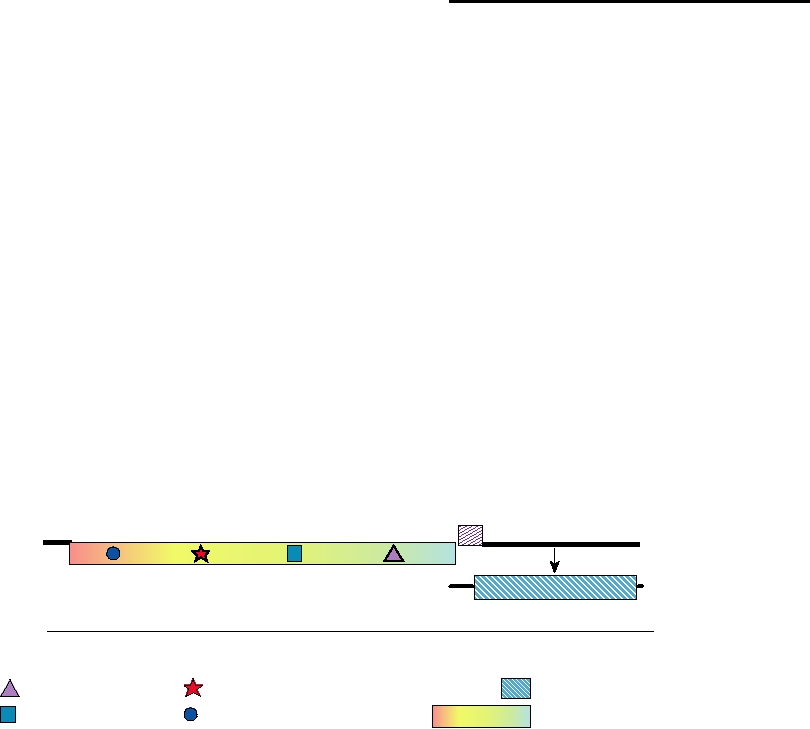outbreaks were associated with eating salads, sandwiches,
more detail in Chapter 7 when we discuss rabbit myxoma
or fresh produce, and in 40% of Norwalk outbreaks restau-
virus. RHDV was being studied on an island off the south
rants or caterers were associated. Some outbreaks have been
coast of Australia as a possible rabbit control agent when
associated with the consumption of raw oysters for reasons
it was "inadvertently" introduced onto the mainland. Once
described earlier. Given the total number of cases of gastro-
introduced it spread rapidly, probably aided by local farm-
enteritis in humans, it is clear that Norwalk virus is a very
ers. The virus was later introduced, at first illegally and then
important disease pathogen.
legally, into New Zealand. The virus has been only moder-
Norwalk virus has also established itself as a bane of the
ately successful in controlling the rabbit populations. When
cruise ship industry. In 2004, for example, there were 38
first introduced, it was highly pathogenic, causing high fatal-
outbreaks of gastrointestinal illness on cruise ships, defined
ity rates. After some time, however, an increasing propor-
as at least 3% of the passengers and crew aboard the ship
tion of rabbits survived infection. In New Zealand, the virus
developing diarrhea or vomiting not due to seasickness and
appears to have developed the ability to establish persistent
accompanied by other symptoms such as fever or aching
or latent infections, perhaps allowing the rabbit host to sur-
muscles. Most of such outbreaks are due to noroviruses. In
vive challenge with virulent virus. There may also have been
one series of episodes studied by the CDC, a cruise ship suf-
a background level of immunity to the virus caused by the
fered outbreaks during six consecutive cruises, despite exten-
circulation of a similar virus in the rabbit population of New
sive efforts to cleanse the ship. After the second outbreak,
Zealand for many years before introduction of the virulent
the ship was taken out of service for a week and scrubbed
virus.
exhaustively, but the outbreaks continued. The CDC inves-
tigation showed that one particular genotype of virus was
FAMILY HEPEVIRIDAE
present in all of the outbreaks, but that new genotypes were
also introduced into the ship from time to time.
Hepatitis E virus is similar in size and genome organiza-
tion (Fig. 3.12) to the caliciviruses and until recently was
Sapoviruses
considered to be a member of the Caliciviridae. It differs in
Many isolates of Sapporo virus have been made in
important details, however, and classification as a distinct
association with outbreaks of gastroenteritis. Sapporo virus
family was deemed appropriate. The viral RNA is capped
also appears to be a widespread virus that is an important
rather than possessing a VPg, and the virus-encoded pro-
cause of human gastroenteritis, but much less is known about
tease, whose sequence has been deduced from the sequence
the epidemiology of Sapporo virus than about Norwalk virus.
of the viral genome, appears to be a papain-like protease
rather than a 3Cpro-like enzyme, another difference from
the caliciviruses. Like the caliciviruses, the capsid protein
Rabbit Hemorrhagic Disease Virus
is 3′ of the nonstructural proteins and is translated from a
Rabbit hemorrhagic disease virus (RHDV), a member
subgenomic mRNA.
of the genus Lagovirus, causes an often fatal illness in
HEV is one of several viruses that cause human hepati-
European rabbits. It has been used in Australia and New
tis (Table 3.6), in this case epidemic water-borne hepatitis.
Zealand in an attempt to control large and destructive popu-
Infection is by the oralfecal route and contaminated water
lations of introduced rabbits, a topic that will be covered in
is often the source of the infection. Unlike picornaviruses
ORF1
An genome
CAP
An mRNA
COAT
Motifs
Coding Domains
Coat protein
Papain Protease
Polymerase (GDD)
Nonstructural proteins
Methyltransferase
Helicase
FIGURE 3.12 Genome organization of hepatitis E virus, adapted from Fauquet et al. (2005) p. 854.
Search WWH :


